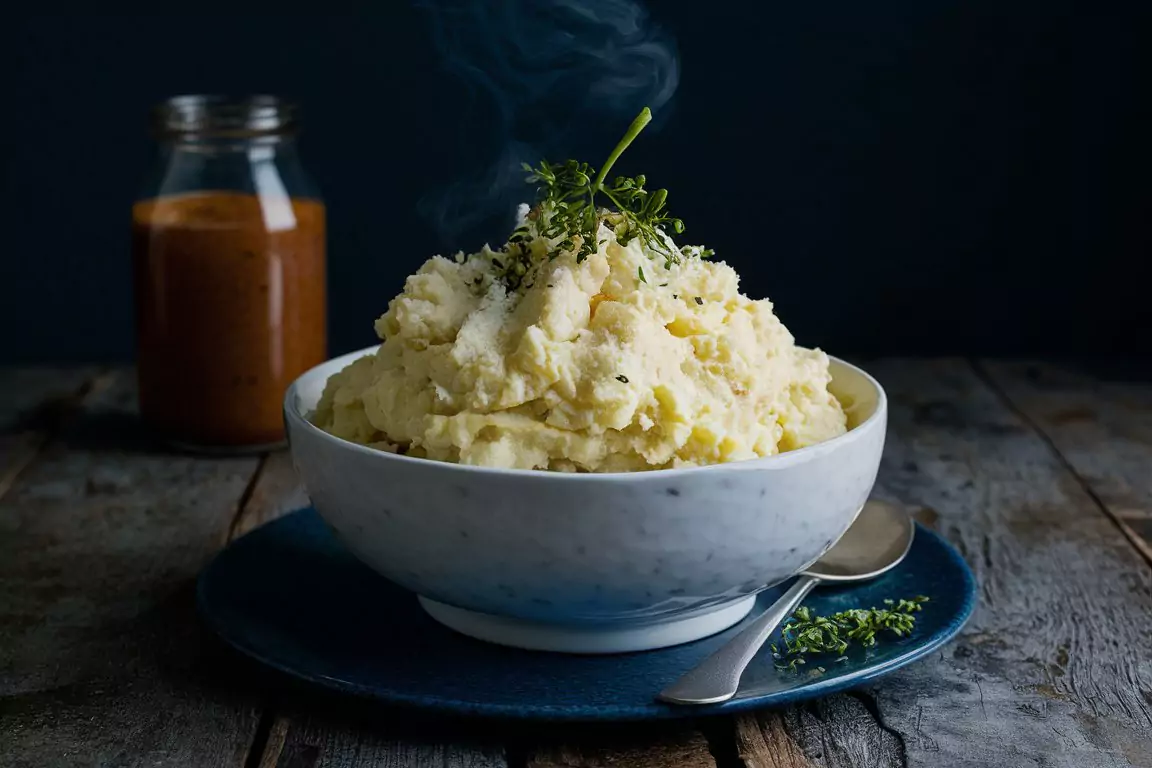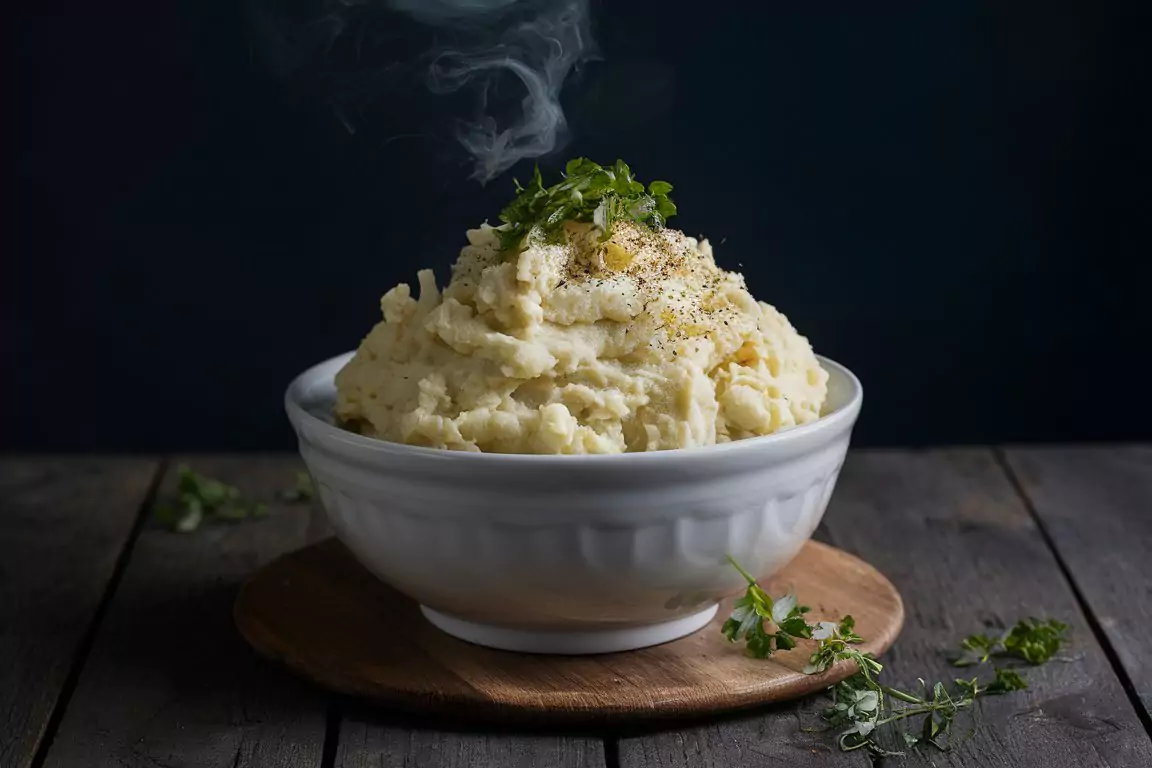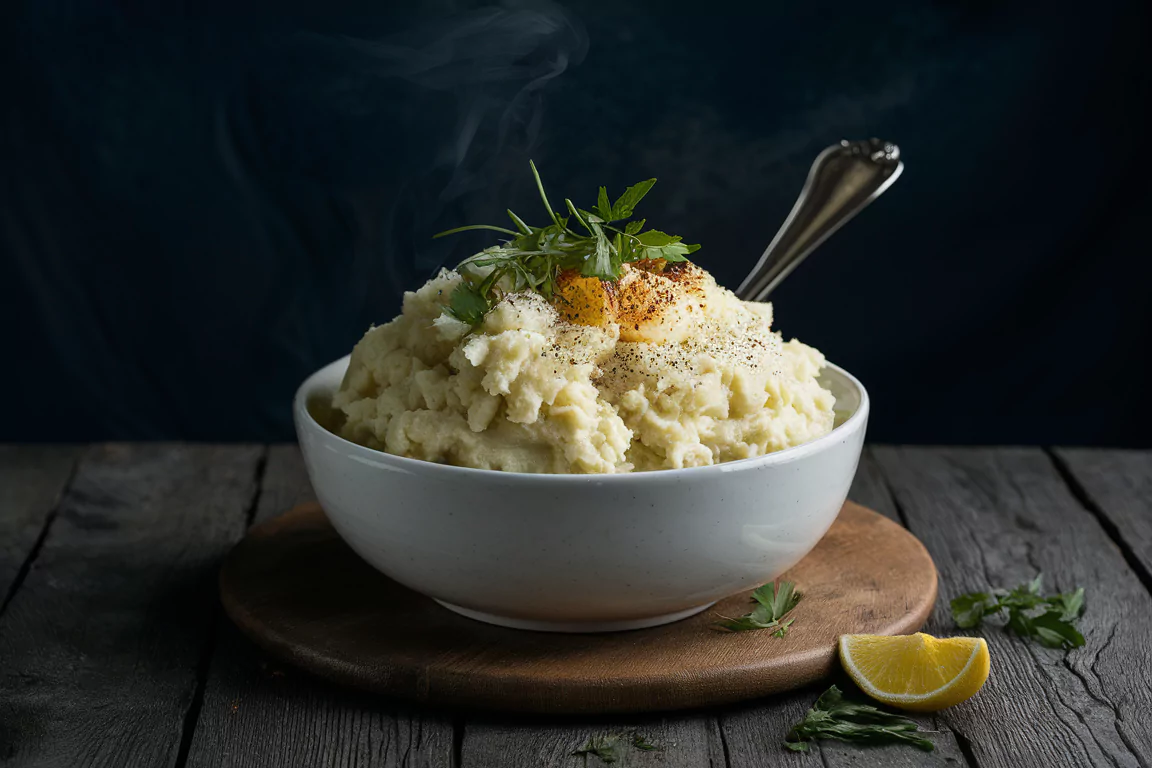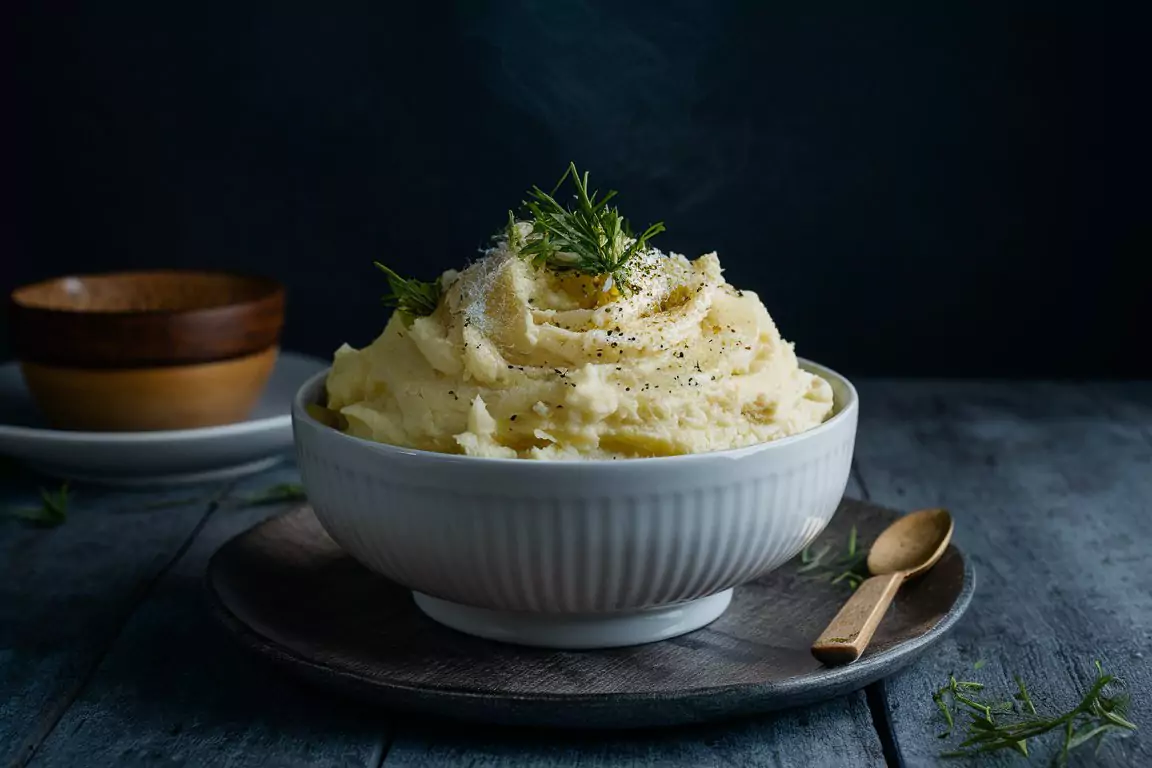This series aims to uncover everything you need to know about creating the perfect mashed potatoes, from the rich history and diverse types of potatoes to mastering the essential techniques and troubleshooting common mistakes. We’ll walk you through each step, ensuring your mashed potatoes are creamy, fluffy, and flavorful every time. Let’s dive in!
The History and Origin of Mashed Potatoes
The History of Mashed Potato
A staple in many households, have a fascinating history. Originally cultivated by the Inca Indians in Peru, potatoes have been a vital food source for centuries. When Spanish explorers brought them to Europe in the 16th century, they quickly gained popularity.
In Ireland, the potato became essential, leading to dishes like champ and colcannon. These early versions laid the groundwork for the creamy mashed potatoes we know and love today. Across Europe, variations emerged, each adding unique twists to the basic recipe.
During the 1700s, potatoes became widely accepted in European cuisine. The French chef Antoine-Augustin Parmentier even held dinner parties to promote them. His efforts helped cement the potato’s place in culinary history. In the United States, mashed potatoes gained popularity in the 19th century, especially during the Thanksgiving celebrations.
Cultural Variations in Mashed Potatoes
Every culture brings its unique touch to mashed potatoes. In France, pommes purée are silky smooth and rich, often featuring copious amounts of butter. Meanwhile, British bubble and squeak incorporates leftover vegetables, creating a hearty, crispy variation.
In Sweden, potatismos includes a hint of nutmeg, adding a warm, spicy note. In India, mashed potatoes are often spiced with turmeric, cumin, and coriander, transforming them into a vibrant side dish known as aloo bharta.
Exploring these cultural variations offers inspiration and showcases the versatility of mashed potatoes. From comforting American classics to globally inspired recipes, there’s a mashed potato style for every palate.
Types of Potatoes for Mashing
Best Potatoes
Choosing the right potato is crucial for perfect mashed potatoes. Different varieties offer distinct textures and flavors, impacting the final result. Here’s a breakdown of the best types:
Russet Potatoes
Russet potatoes, often referred to as Idaho potatoes, are ideal for mashing. Their high starch content yields fluffy, light mashed potato. Russets absorb butter and cream exceptionally well, ensuring rich and creamy results.
However, they can become gluey if overworked, so handle them gently. For the best texture, use a potato ricer or masher. Avoid food processors, as they can turn russets into a sticky mess.
Yukon Gold Potatoes
Yukon Gold potatoes are a favorite for their buttery flavor and creamy texture. With medium starch content, they strike a perfect balance between smoothness and body. They don’t require as much butter or cream, making them a slightly healthier option.
Yukons hold their shape well, making them versatile for various mashed potato styles, from rustic to ultra-smooth. Their natural richness means you can achieve delicious with minimal effort.
Red Potatoes
Red potatoes, with their waxy texture, create denser. They’re perfect for those who enjoy a chunkier consistency. Reds are less starchy than russets or Yukons, resulting in a heartier dish.
These potatoes retain their shape well, even when mashed, making them excellent for rustic-style mashed potatoes. Their slightly sweet flavor adds a unique twist, making them a delightful choice for creative variations.
By understanding the characteristics of these potato types, you can tailor your mashed potatoes to your taste. Whether you prefer them light and fluffy or dense and hearty, selecting the right potato is the first step to perfection.
Ingredients and Variations

Essential Ingredients for Mashed Potatoes
Creating the perfect mashed potato requires a few key ingredients. While the basics are simple, each component plays a vital role in achieving the desired texture and flavor.
Butter
Butter is a cornerstone of great mashed potatoes. It adds richness and a silky texture. Use high-quality, unsalted butter to control the seasoning. For extra flavor, try browned butter or herb-infused butter.
Milk or Cream
The choice between milk and cream depends on your preference for richness. Cream yields the creamiest results, while milk provides a lighter texture. For a balance, consider half-and-half. Warm the dairy before adding it to prevent cooling the potatoes.
Salt and Seasonings
Proper seasoning is crucial. Salt enhances the natural flavor of potatoes, making them taste their best. Start with a teaspoon and adjust to taste. Beyond salt, experiment with garlic, chives, or even a hint of nutmeg for depth.
Creative Variations
Elevate your mashed potatoes with these creative twists. Each variation brings new flavors and textures, transforming a classic dish into something special.
Garlic
For garlic lovers, garlic mashed potato are a must-try. Roast a head of garlic until soft and fragrant, then blend it into the mashed potato. The result is a rich, savory side dish bursting with flavor.
Cheesy
Cheese lovers will adore cheesy mashed potatoes. Incorporate shredded cheddar, parmesan, or your favorite cheese into the mix. The cheese melts into the potatoes, creating a creamy, gooey delight.
Vegan
Vegan mashed potatoes can be just as creamy and delicious. Substitute butter with vegan butter or olive oil. Use plant-based milk like almond or oat milk. Season with nutritional yeast for a cheesy flavor.
Experimenting with these variations can turn a simple side dish into a highlight of your meal. Whether you stick with the classic or try something new, mashed potatoes offer endless possibilities.
Techniques for The Perfection
Step-by-Step Guide
Achieving perfect mashed potatoes involves a few key techniques. Follow this step-by-step guide to ensure consistently delicious results every time.
Preparing the Potatoes
Start by selecting the right potatoes. Peel and cut them into even chunks for uniform cooking. Place the potatoes in a large pot, cover with cold water, and add a generous pinch of salt. Bring to a boil, then simmer until the potatoes are fork-tender.
Mashing Methods
Mashing technique matters. For a smooth texture, use a potato ricer or food mill. These tools break down potatoes without overworking them. A traditional masher works well for chunkier mashed potatoes. Avoid blenders or food processors, as they can turn potatoes gummy.
Adding Ingredients
Drain the potatoes thoroughly to remove excess water. Return them to the pot and mash. Gradually add warm butter and milk or cream, blending until smooth. Season with salt and pepper, then taste and adjust as needed.
Achieving the Perfect Consistency
Consistency is key. For creamy mashed potato, add more butter and cream. For lighter, fluffier potatoes, use less. Mix gently to avoid overworking, which can make the potatoes gluey.
With these techniques, you can master the art of making the perfect mashed potato. Do not be afraid to explore and discover your favorite style—practice makes perfect.
Common Mistakes and How to Avoid Them

Common Mistakes
Even experienced cooks can encounter issues with mashed potatoes. Here are common mistakes and tips to avoid them.
Overmixing
Overmixing mashed potatoes releases starch, resulting in a gluey texture. To prevent this, handle the potatoes gently and use the right tools. Avoid electric mixers, which can quickly overwork the potatoes.
Using the Wrong Type of Potato
Choosing the wrong potato can affect the texture. High-starch potatoes like russets yield the best results. Waxy potatoes like reds can become too dense. For the best texture, stick with recommended varieties.
Not Seasoning Properly
Seasoning is crucial for flavor. Salt the cooking water and taste as you go. Don’t wait until the end to add salt, as it won’t distribute evenly. Experiment with additional seasonings like garlic or herbs for extra flavor.
How to Fix Watery
Watery mashed potatoes can be salvaged. Return them to the pot and cook over low heat, stirring constantly. The excess moisture will evaporate, and the potatoes will thicken. Alternatively, add a bit of instant potato flakes to absorb the liquid.
How to Fix Lumpy
Lumpy mashed potatoes often result from uneven cooking or insufficient mashing. To fix this, pass the potatoes through a ricer or food mill. If you don’t have these tools, use a sturdy masher and work the potatoes thoroughly.
Avoiding these common mistakes will help you achieve perfect mashed potato every time. With practice, you’ll develop a foolproof method for this classic dish.
Serving and Storing
How to Serve
Serving mashed potatoes well is the final step to perfection. Presentation and pairing can elevate your dish from simple to spectacular.
Best Accompaniments
Mashed potatoes go well with many different kinds of food. They complement roasted meats, poultry, and vegetables. For a comforting meal, serve them alongside pot roast or meatloaf. Their mild flavor balances richer, savory dishes.
Presentation Tips
Presentation matters. Serve mashed potato in a warm dish to maintain their temperature. For a splash of color, garnish with fresh herbs like parsley or chives. A drizzle of olive oil or melted butter adds an inviting sheen.
Storing and Reheating
Proper storage and reheating methods ensure your mashed potato remain delicious.
Refrigerating
Store leftovers in an airtight container in the refrigerator. They’ll keep for up to four days. To reheat, add a splash of milk or cream and warm gently over low heat, stirring frequently.
Freezing
For longer storage, freeze mashed potatoes. Place them in a freezer-safe container, leaving space for expansion. They’ll keep for up to three months. Thaw in the refrigerator overnight before reheating.
Reheating Methods
Reheat mashed potatoe on the stovetop, in the microwave, or in the oven. On the stovetop, use low heat and stir constantly. In the microwave, heat in short intervals, stirring between each. For the oven, cover with foil and bake at 350°F until warmed through.
By following these tips, you can enjoy perfectly reheated mashed potato that taste as good as freshly made.
Nutritional Benefits

Exploring the Health Aspects
While mashed potatoes are often seen primarily as comfort food, they also offer several nutritional benefits when prepared thoughtfully. Potatoes themselves are a good source of vitamins C and B6, potassium, and dietary fiber, especially when the skins are left on.
How to Make Mashed Potatoes Healthier
To boost the nutritional profile of your mashed potatoes, consider the following tips:
- Use skin-on potatoes to retain more fiber and nutrients.
- Opt for low-fat dairy options like skim milk or light cream to reduce calorie intake.
- Incorporate olive oil instead of butter for a heart-healthy fat choice.
- Add garlic and herbs such as rosemary and thyme for flavor and additional antioxidants without extra calories.
Frequently Asked Questions About Mashed Potatoes
Here are answers to some common questions about mashed potato, ensuring you have all the information you need for perfect results.
Can You Make Mashed Potatoes Ahead of Time?
It is possible to prepare mashed potatoes in advance. Prepare them as usual, then store them in the refrigerator. To reheat, add a bit of milk or cream and warm gently. This method ensures they remain creamy and delicious.
How Do You Keep Mashed Potatoes from Becoming Gluey?
To avoid gluey mashed potatoes, handle them gently and use the right tools. Stick to a masher, ricer, or food mill. Avoid overmixing, which releases starch and creates a sticky texture.
What Is the Best Way to Reheat Mashed Potatoes?
The best way to reheat mashed potatoes is on the stovetop or in the oven. Add a splash of milk or cream and warm gently over low heat. Stir frequently to ensure even heating. For the oven, cover with foil and bake at 350°F.
Can You Freeze Mashed Potatoes?
Yes, you can freeze mashed potatoes. Store them in a freezer-safe container, leaving space for expansion. Thaw in the refrigerator overnight before reheating. This method preserves their texture and flavor.
How Do You Make Mashed Potatoes Without Milk?
To make mashed potatoes without milk, use alternatives like chicken broth, vegetable broth, or non-dairy milk. Olive oil or vegan butter can also add richness. Season well to enhance flavor.
Conclusion of Mashed Potatoes
Comforting dish enjoyed worldwide. By understanding their history, choosing the right potatoes, and mastering essential techniques, you can create perfect mashed potato every time. Experiment with variations and troubleshoot common issues to elevate your mashed potato to new heights. Happy cooking!

